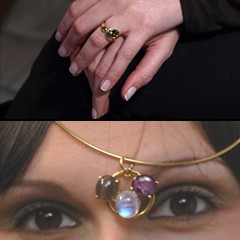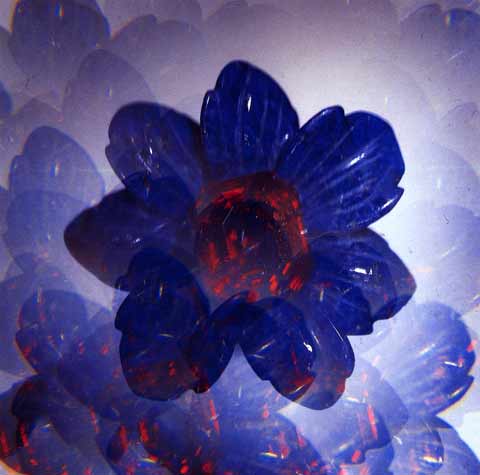
Fantasy of a flower in lapis lazzuli and essonite garnet.
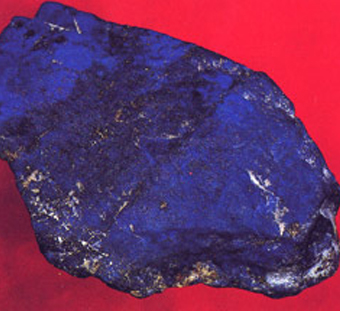
Rough Afghan lapis lazzuli of excellent quality. One can see the veins of pyrite, zones of varying shades of blue, and the sparse white-ish areas.
The first thing to say is that it has a beautiful name. Without suffixes in “ite”, and that “i” at the end which suggests a plural form: its name already unsettles us. And those specks of gold, which appear like a planetarium of stars, but a planetarium that you can hold in your hand, on that blue that is so intense, these stars seem to be winking; and they seem to want to tell a story. I was in Afghanistan, in the seventies, and the memory of those lands is fantastic. The people great and proud; a barren land, desert, with temperatures that can be fierce at times; a culture that is so alive and so much different from ours, with the craft skill of forging iron and making beautifully sculpted weapons, with their well-decorated wooden buildings, with large areas of the city which are absolutely barred to foreigners. Often the decorations are based on floral motifs. The Koran prohibits the use of images, and Sunni Muslims are among the most orthodox and uncompromising. Taking pictures is very offensive, and can create serious problems. I had placed my camera paraphernalia to portray a nomadic tribe camp from a hundred meters away, and was fired a shot into the air as a sign of friendly warning. Moreover, it can be that you go tens of kilometers without seeing a spear or a plant. Sculpting in wood and stone their love for the garden, with all the implications of a symbolic ‘“Tree of Life”, its flower and its fruit, is inherent to its people. Finally, these lands have been of Muslim culture for a little over a thousand years, and they still have mountains full of statues of the Buddha and the caves of their priests, carved straight into the rock. And the lotus flower and other floral symbols are so ingrained with Buddhism, that just a few centuries of other religions are not enough to forget.
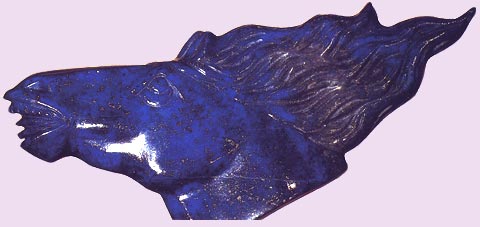
A horse running wild. In his etchings the artist succeeds in adding value to those parts that are more “poor”; the mane has been created in the area where there was less color, and the result is really wonderful.
Suddenly then, Afghanistan, where time had such a different flow, with its beautiful colors, its amazing music, its scents, its so improvable hygiene habits, its so medieval recent history, its one and only road to cross it; jumped to the attention of the world for an incredible war. At first, it seemed as if a few million people would succumb overnight. I was sad about the fate of those people, and it so happened that I met a man who imported Russian crystals for electronics and jewelery, and some precious stones.
He was happy because, after the occupation, he would have been able to buy large quantities of lapis lazuli from Afghanistan in Russia, at a low price. The same day I met another amazing personality, he could trade Afghan lapis through Pakistan, where the “Mujahideen” were smuggling lapis in order to finance the guerrillas. Mule trekking from the heart of Bandakscian, for several days, accompanied by a belief that borders on fanaticism, with far more pride and knowledge of desert tracks than those of their enemy. It’s amazing how stones know how to tie with the history of their people.
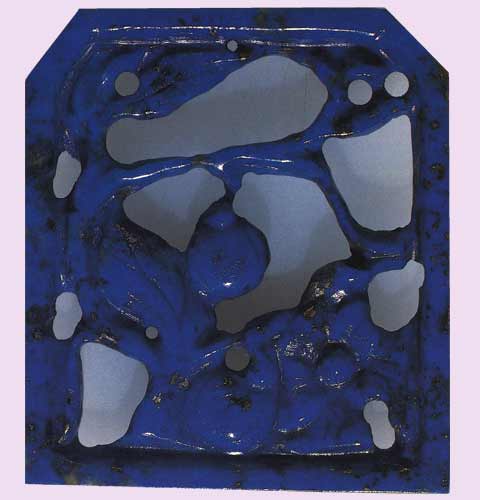
Afghan lapis lazzuli pendant, representing the open windows on a garden. There is sweetness of the best Muslim tradition in this simple object. The sample pictured, though following Afghan culture, has been worked in Bankog.

Delicate female face in lapis lazzuli, pasted on quartz. Coats of arms, cameos, seals, bottles, small sculptures, are the natural field of expression from lapis lazuli outset.
And for many years the war went on, until the unexpected victory of the Afghan resistance. At the time of Alexander the Great and Genghis Khan have tried to fold this proud people; and so has one of the major world powers during our century, in vain.
And finally, there comes wrought material in the West, as well as rough lapis lazuli rough. Wrought with floral designs, with the subtle symbolism of apples, lotus flowers, vines, butterflies, enchanted gardens. The war has been a parenthesis, and restoration also passes through lapis lazuli. The hope is that this people finds peace, and not the pleasure of war, sacred or profane be it; that they be inspired by Sufism to propose the world their beautiful works of art, and not get carried away by the regurgitations of all too intransigent medieval and religious visions.
Usually gemstones are derived from clear crystals; lapis lazuli instead belongs to the category of bulk minerals, rocks, marbles, conglomerates. It has always been appreciated for its beautiful color, and has accompanied wealth, power, the magic and sacredness, as with all gemstones. The fact that it is not transparent and has nodules and has zoning of beautiful colors interspersed with areas of an insignificant color makes it ideal for small sculptures, jewelry, bottles so convoluted that they do not even resemble bottles. The culture of lapis lazuli is parallel to that of the jade, closely linked to the history of its territory, and so rich in significance that can be for us, at times difficult to comprehend and to participate to. Of course, they also make cabochons and beads, thus decreasing the expressive potential of this noble material. This is never all natural. If the color is dull, there are appropriate tricks to intensify it; itn the lab, it is also possible to create a very similar material; as always, caution is never enough. Until yesterday it was enough to look at the gem against the light; If the edges had some type of translucent transparency, it was considered good; Today, with the new imitations, it is better to turn to specialized laboratories of gemology.
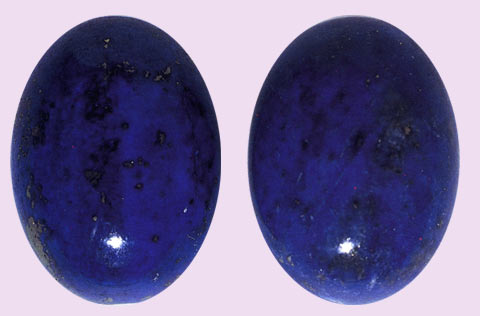
The museums around the world have seals, especially cylindrical, in lapis lazzuli. Moreover, the powder of lapis lazuli keeps its nice blue color, contrary to other stones which, in powder form, are mostly greyish. For centuries, painters have used its powder to paint the skies. The seals are much more than just portraits; the seals are portraits of the soul; for this reason, the powerful who were declining in ancient Rome, broke the seals of their rings before committing suicide. And in painting, the color blue is not used to depict faces, except those of certain Indian deities, coming down among us only to catch and conduct great historical events. One would say that this stone is linked to the history and emotions of the people.
In addition, the main quarries remain the same as ever, and no there is no mention of exhaustion yet. Sure; the highest quality reaches dizzying prices, and traders are looking for similar materials that cost less. Sodalite, azurite, lapis from Chile, chrysocolla, pastes and semi-synthetic reinforced colors are part of the normal routine of a gemologist. The “right” color is a very intense blue, which looks almost wet, with a tendency towards dark violet. It is good that there are flecks of pyrite, but they must not be too abundant; the white zoning depreciates it.
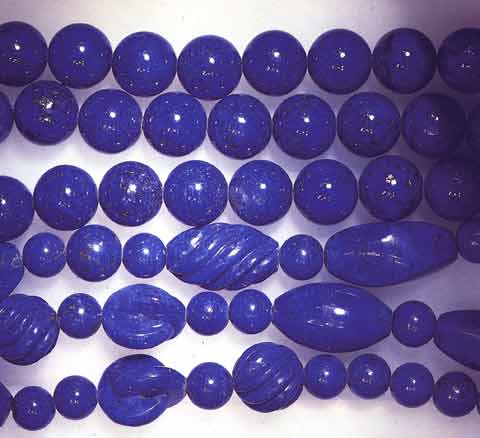
Necklaces. The three rows of balls have been processed in Germany, while the other pieces, the most imaginative, but less precise, have been worked in the East.
The pyrite that surfaces in the blue of lapis lazuli that we hold in our hand, seems to wink; It looks like stardust. And the deep blue of this stone, dotted with those golden reflections, reminds us that what is Below is a reflection of what is Above. And ‘then the illusory idea of “owning” a piece of sky or a piece of lapis lazuli. This stone can give us much more than the pleasure of its possession; also this stone can be a “gateway” to higher levels, as the caves in the Manian region have been for many monks. Transparency, opacity, reflecyance, chromaticity, are different ways of the presenting of this raw material in front of visual sensitivity. Aesthetic enjoyment, material interest, support for meditation, are different approaches of the presenting of our spirit in front of the prospect of the Manifestation, in front of a gemstone.
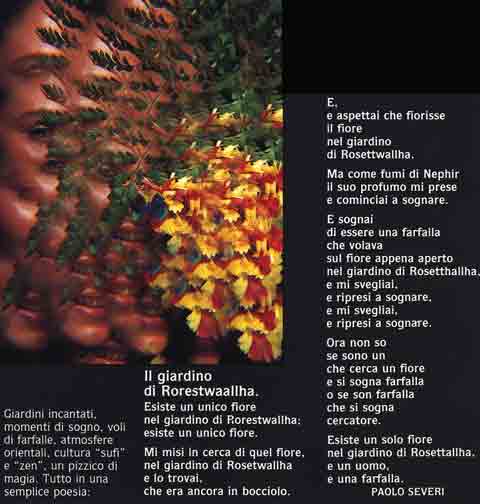
Specifications
Mineral of the group of SODALITE, whose main exponents are precisely the sodalite and lapis lazuli (less known by the name of “lazurite“). The chemical composition is complex; It is a complex silicate of aluminum and sodium. The chemical formula basis, is: 3NaAlSiO4.NaS3. (The sodalite, instead of “S3“, has “Cl“). The hardness varies between 5 and 5.5; the theoretical density is about 2:40. Since it is never found “pure” but always mixed with other minerals, its specific weight varies between 2:38 and 2.95. Index of refraction: 1,5. Crystallization is in monomeric system; But we talk about microcrystallization. Visible crystals of lapis lazuli are most unique and rare; generally it is in composite masses, mixed with calcite, pyroxene, amphibole, mica, pyrite and magnetite.
It is ‘one of the oldest gems; the Egyptians, the Chaldeans, the Assyrian-Babylonian of the beginning of the history of mankind went to look for it where it is still searched for; in the rugged mountains of Hindukusch, in the area of Badakschan. Other important deposits are found in Russia and Chile; the latter of less valuable quality. As already mentioned, its value is high. Be careful: flecks of pyrite that shine in it, seem tiny shards of gold. But this is pyrite, confirming the ancient proverb.










